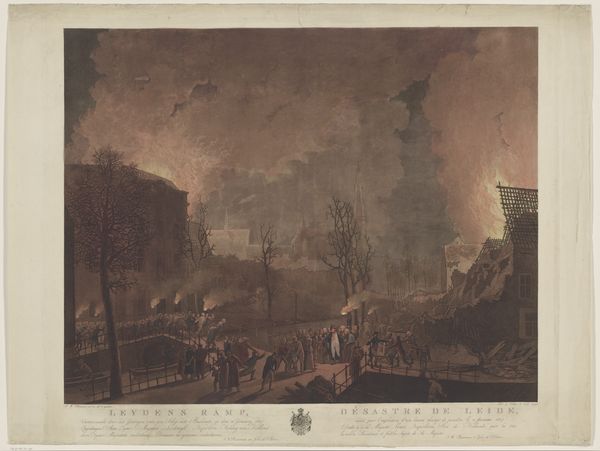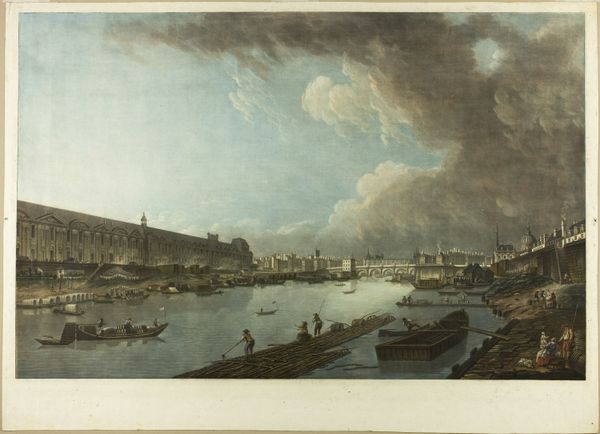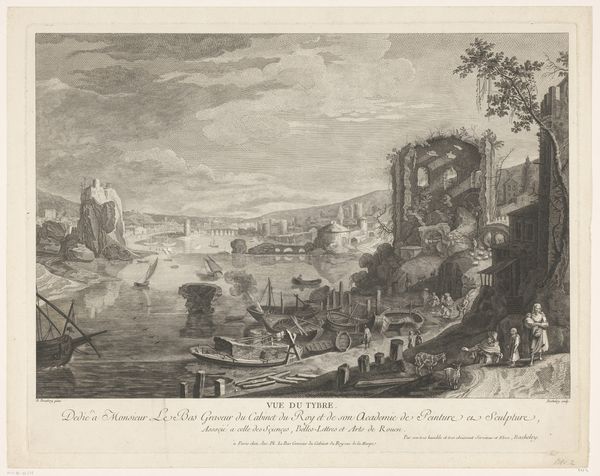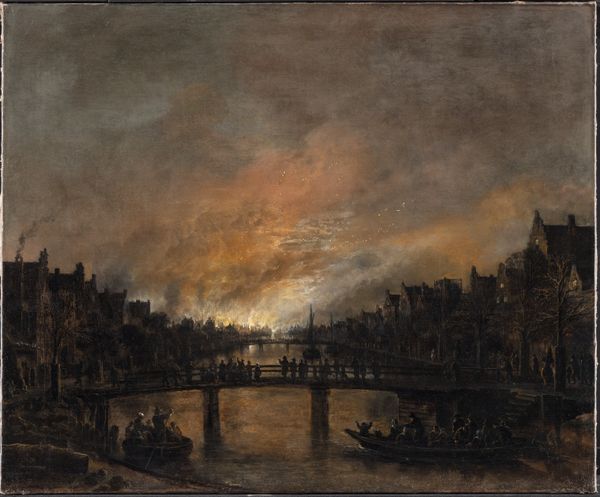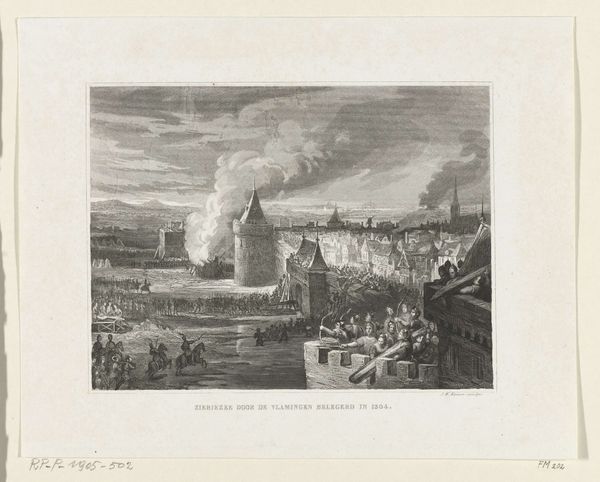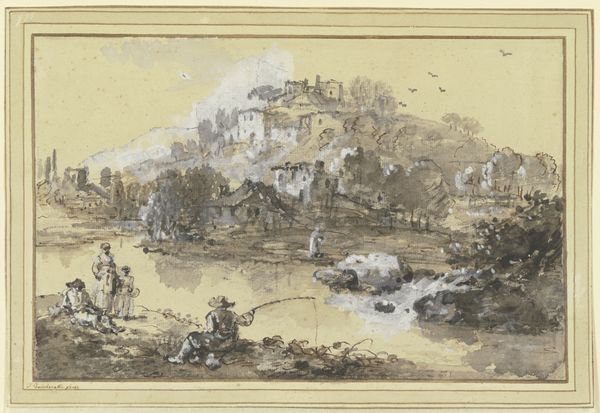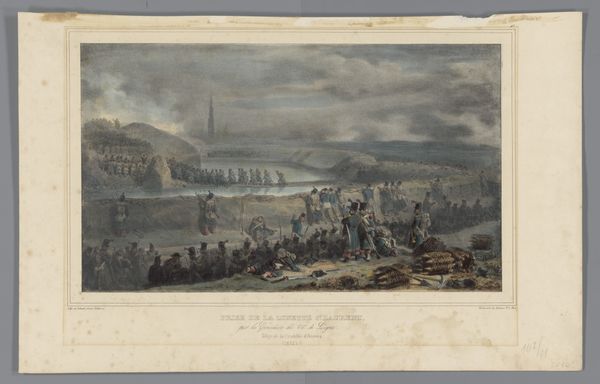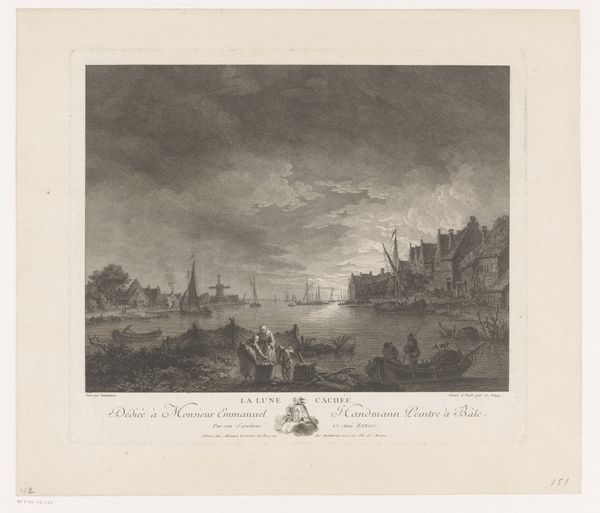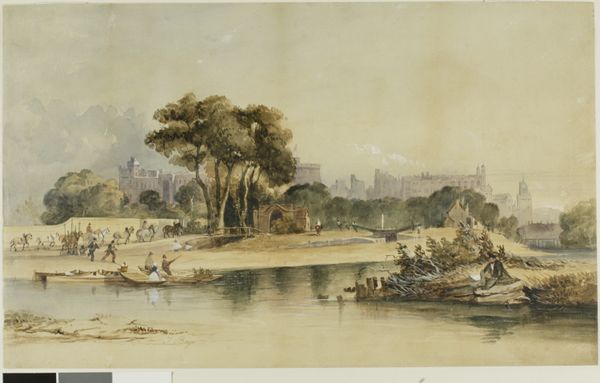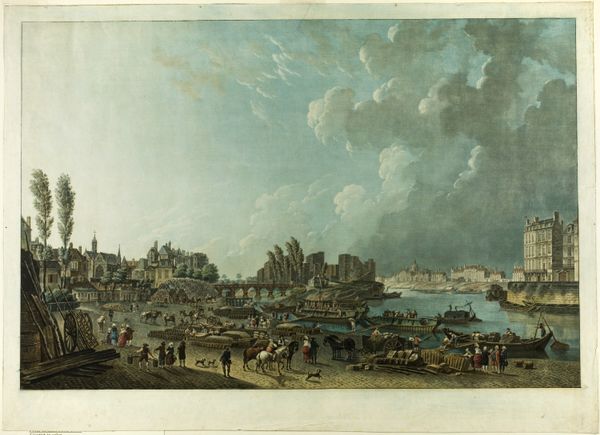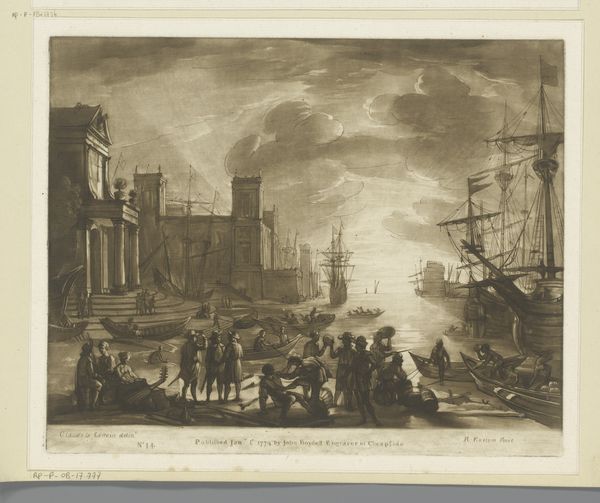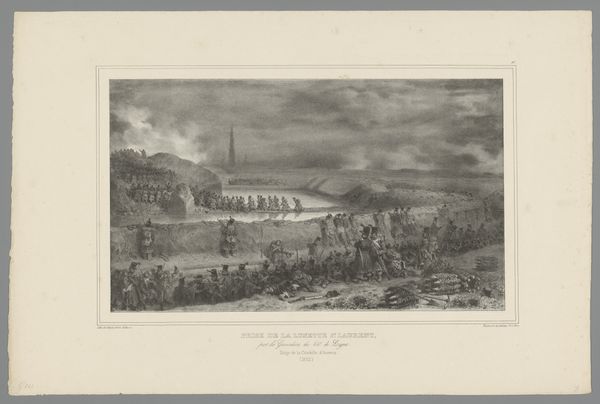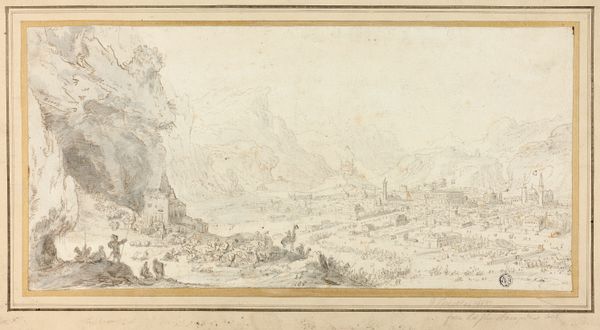
drawing, print, paper, watercolor
#
drawing
#
water colours
# print
#
landscape
#
paper
#
oil painting
#
watercolor
#
romanticism
#
history-painting
#
academic-art
Copyright: Public Domain
Editor: Here we have "Celebration of the Fourth of June at Eton," created in 1837. The artwork, attributed to C. O. Lewis, employs watercolor, drawing, and print techniques on paper. What I find most striking is how the soft, almost hazy rendering contrasts with the rigidity of the architecture in the background. What stands out to you in this piece? Curator: What immediately grabs my attention is the materiality itself: the layered effect of watercolor and print, the deliberate choice of paper. These elements aren’t neutral; they speak volumes about the context of artistic production at the time. Consider, for instance, the romantic landscapes prevalent in academic circles; how did that framework determine access and the resources at their disposal for artists like C.O. Lewis? Editor: So you’re saying the choice of watercolor, printmaking, and even paper itself speaks to broader social forces? How so? Curator: Absolutely! Watercolor was more accessible, and printmaking allowed for wider distribution. The availability of these materials also highlights who had the means to commission or create art using them. This was at a time of evolving class structures; the growing middle class sought avenues to imitate aristocratic tastes. Does the subject—a celebration at an elite institution—tie into that, do you think? Editor: That's interesting. I never thought about the materials in terms of accessibility. It’s almost as if Lewis is depicting not just a celebration, but a demonstration of social aspirations being rendered for specific viewers. Curator: Precisely! By looking at the materials, labor, and methods of distribution, we understand not just what’s being depicted, but who had the power to depict it, and for whom. How might that reshape our understanding of "academic art"? Editor: I see what you mean! Focusing on the production reveals that even seemingly straightforward depictions carry underlying narratives about class and aspiration. Thanks.
Comments
No comments
Be the first to comment and join the conversation on the ultimate creative platform.
